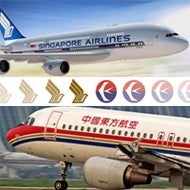Where Consumers Diverge From Others: Identity-Signaling and Product Domains
Looking for more insights?
Sign up to stay informed about our latest article releases.
It was a perfect deal and it had approval from the top levels of the Chinese government. Singapore Airlines (SIA) and its parent company, Temasek, were set to purchase a 24% stake in Shanghai-based China Eastern Airlines. But circumstance can change very quickly in China, and a few weeks after it was announced, the deal fell through: A rising stock market, an apparent government about-face, some behind-the-scenes maneuvering by a competitor and a dose of old-fashioned Chinese nationalism combined to scuttle the acquisition. Whatever happens, the case has already become a landmark. China Knowledge at Wharton explores the details.

Where Consumers Diverge From Others: Identity-Signaling and Product Domains
Sign up to stay informed about our latest article releases.